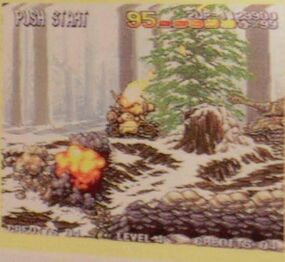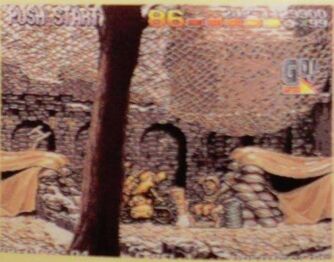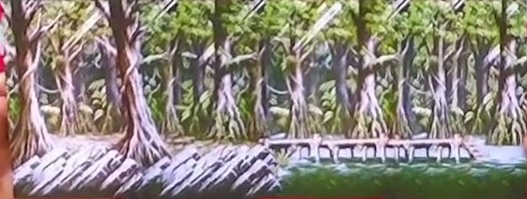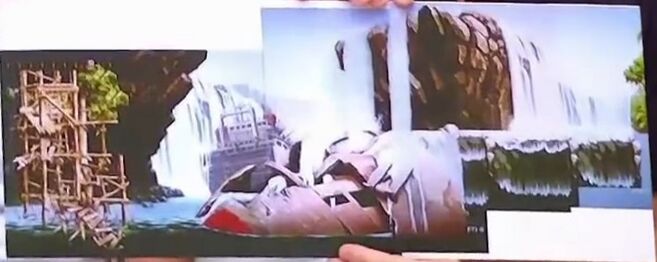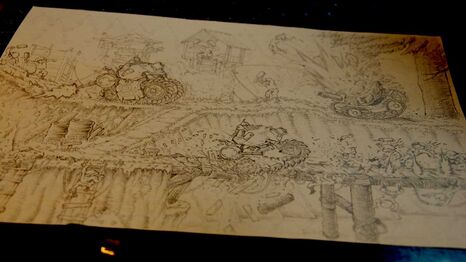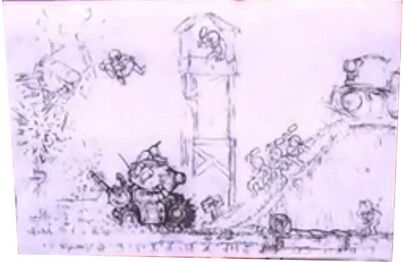Metal Slug (lost early build Japanese arcade run and gun game; 1995)
Metal Slug (メタルスラッグ) is a Japanese run and gun game released for Neo-Geo on April 16, 1996, developed by Nazca Corporation and published by SNK. The game was highly acclaimed for its artistic animation by Akio, a graphic designer who also worked on R-TYPE and In the Hunt, as well as its poignant presentation and good controls, and remains one of the best run and gun games to this day. The game is given a playable character named Marco Rossi, but in early development it was a completely different character. Furthermore, the playable is Metal Slug, a tank controlled by that character, and the variety of actions, including jumping in the final version of the game, is a remnant of that.
According to Shinichi Hamada, the programmer of the game, the reason for changing the playable character from a tank to a human being was that during the location test, the response from players was not very good, so development was halted for a month. During that time, he held a meeting with the planners and Akio to come up with a better idea, and it seemed to Hamada that everyone was thinking in their hearts that it would be better to have a human playable character[1].
Early plot
In 20XX, General Morden enacted a military coup he had been planning for years in a bid for world domination. With coordinated support across the globe, Morden and his Rebel Army conquered the major cities of the world in just 170 hours. The Regular Army was crushed in a number of surprise attacks, though the survivors formed a resistance movement to push back against Morden's regime.
Enter Phil Gene. Before Morden's takeover, he was a developer in the Regular Army and was rushing to complete the new all-purpose tank (Super Vehicle) to be at the forefront of their next campaigns: the Metal Slug. However, a Rebel attack force had finally pinpointed the location of a secret factory belonging to the resistance. Lacking the man and firepower to repel them, the factory was reduced to rubble.
From behind the debris, another tank appeared. With one blast of its cannon, the Rebel tank "Di-Cokka" was blown apart. Phil's test run on the Metal Slug had begun. On board the prototype SV-001 was Phil, with his talented assistant and beloved lover Michiko Nakajima in the SV-002.
Now, the two-tank army began their march...
Differences
Many differences from the final version exist in the early versions. The first confirmed magazine feature of Metal Slug is from Gamest Vol. 151 September 30, 1995 issue. Starting below are the early details of the game as described in each magazine.
Gamest Vol. 151
- The early control layout used only the stick and the A and B buttons, the C and D buttons were not used. The A button shoots and the B button jumps, but for shooting, the cannon and vulcan are fired simultaneously. At this time, if the stick is down and the Slug is in the prone position, it can fire a different round than normal. The vulcan is locked by holding down the A button and can be aimed with the stick as in the final version.
- The mission 1 level was distinctly different in background, composition, etc. The setting was a marshy area with water. The collapsed submarine had a more deserted design than the final version. Furthermore, Di-Cokka, which in the final version appeared from mission 2, was to appear from mission 1 in the early version. The boss of this level, Tetsuyuki's wing, was manned by two enemy soldiers sitting on gun turrets. And the color of the laser fired by Tetsuyuki was yellow.
- The role of POW soldiers in the early version differs significantly from that of the final version. First of all, the appearance is similar to that of enemy soldiers. Whereas in the final version, after being rescued, they would give the player an item, salute, and leave, in the early version they would walk around to assist the player and automatically attack the enemy. There are two types of POW soldiers, one is the one who will ride in Slug's turret and fire a bazooka for a covering attack. The other is the one who follows Slug and gives him a covering attack with a grenade. If Slug jumps, his captors will do the same move. In addition, the POWs automatically sit on gun turrets placed at certain levels and attack the enemy. The color of the POW sodiers is blue when exposed to the hostage, but changes to white after the rescue. Incidentally, the graphics data for the POW soldiers[2] and gun turret soldiers[3] are retained inside the final version.
- If multiple POW soldiers are rescued, the second and subsequent soldiers appear as a stock at the bottom of the screen and are replenished each time a soldier is killed. The score tally for mission completion is added as a bonus for surviving soldiers. This system was changed in the final version to a system in which when a player character is defeated, the POW soldiers rescued up to that point are reset and do not count toward the score tally. In addition, there is no surrounding box on the score tally screen.
- The levels of each mission were in a different order in the early version. "The City Under Despotism," which was Mission 5 in the final version, was Mission 2, and "The Memorial Sea," which was the final mission, was Mission 3.
Neo-Geo Tsūshin Vol. 2
- The control layout was changed, with the C and D buttons being used at this time and all buttons from A to D being used for shooting.
- In the Mission 1 level, there were enemy soldiers who would jump on you and try to throw grenades into the Slug, and turret that would fire homing missile. These appeared in the final version starting with Mission 2. In addition, there were enemy soldiers with bazookas on a rocky hill with flowing water just before the boss (The design is also different from the final version).
- Mission 4 in the early version was shown to be "Iron Cavalrymen in Hell," which became Mission 3 in the final version, and Mission 5 was shown to be "Death Valley," which became Mission 4 in the final version.
Gamest Vol. 152
- A more detailed explanation of the layout of the changed controls is given, and you can jump by moving the stick up. Regarding the direction of fire with buttons A through D, A is forward, B is upward, C is backward, and D is downward. In addition, it is possible to aim diagonally by pressing multiple buttons simultaneously. The commands are as follows: A and B for forward diagonal up, A and D for forward diagonal down, B and C for backward diagonal up, and C and D for backward diagonal down. The magazine explained that this operation takes some time to get used to and implied that it may be changed later. As a result, the final version underwent another layout change and only the D button was no longer used.
- The boss of Mission 2 (Mission 5 in the final version), Iron Nokana, has no spiked plate.
Gamest Vol. 154
- The POW soldiers throwing grenades to assist Slug now have the added ability to attack enemy soldiers with knives if Slug is surrounded by enemy soldiers. A system has also been added that allows POW soldiers to sit on two gun turrets installed in Tetsuyuki's wings and automatically attack.
- A surrounding box has been added to the score tally screen.
Availability
As of 2023, no builds of this early version have surfaced online and no ROM boards have been comfirmed.
Gallery
Video
The Amusement Show 1995
Gamest Vol. 151
Neo-Geo Tsūshin Vol. 2
Gamest Vol. 152
Gamest Vol. 154
Neo-Geo Tsūshin Vol. 3
Gamefan Vol. 3
Other screenshots
Probably from Neo Geo Freak. The HUD has an additional 5 pip lifebar. This is present in the graphics data[4].
Concept art
Related Links
See Also
References
- ↑ Interview with Shinichi Hamada by Famitsu Retrieved Jun 4, 2023
- ↑ Graphics data for unused POW soldiers - TCRF Retrieved Jun 4, 2023
- ↑ Graphics data for unused gun turret soldiers - TCRF Retrieved Jun 4, 2023
- ↑ Graphics data for unused 5 pip lifebar - TCRF Retrieved Jun 4, 2023
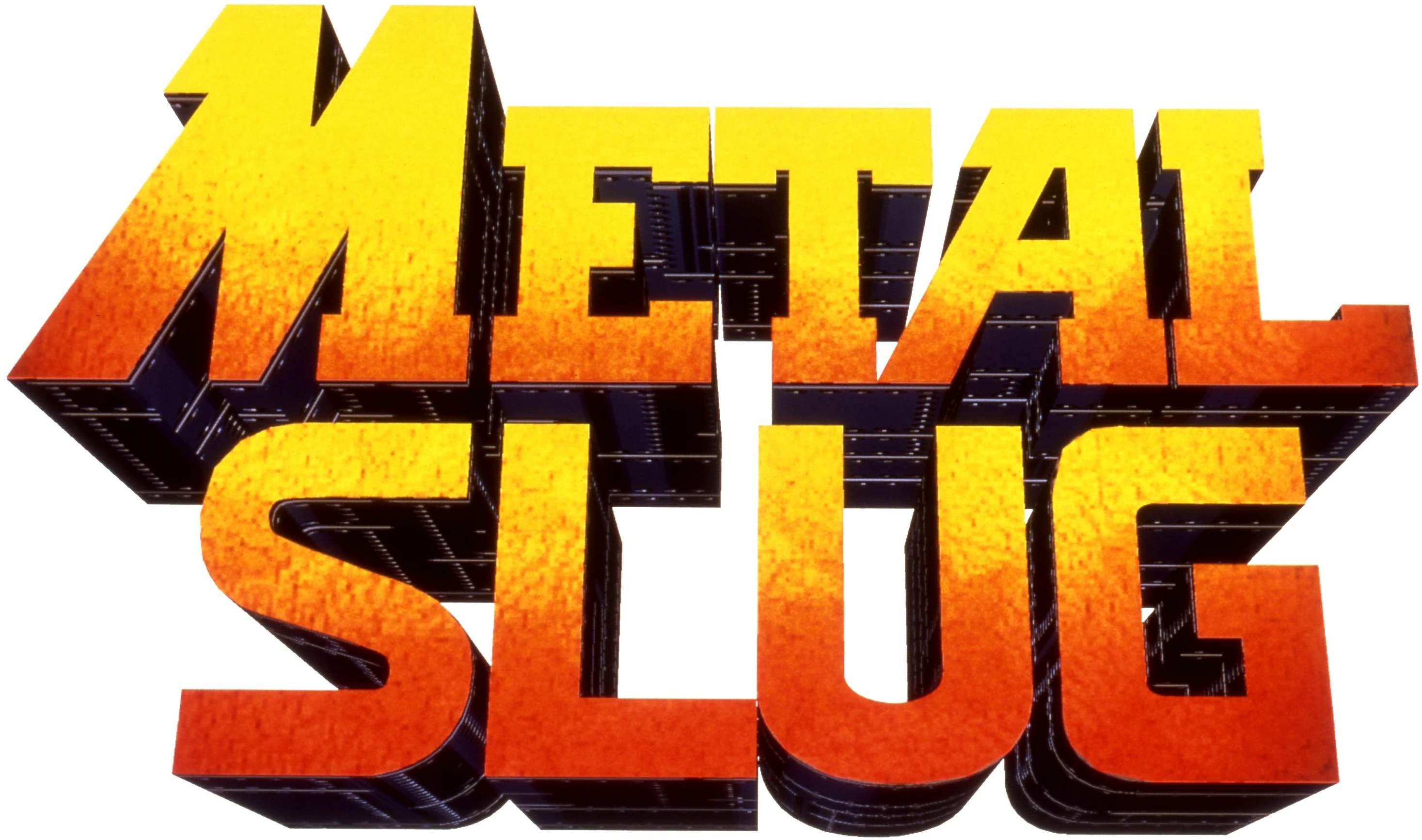
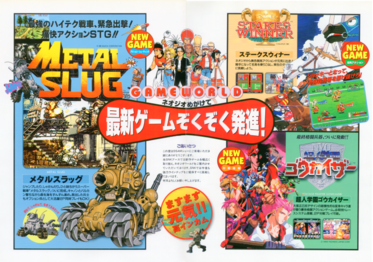
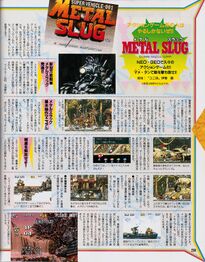
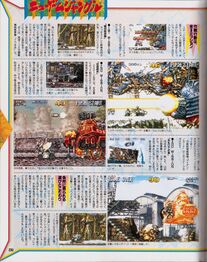
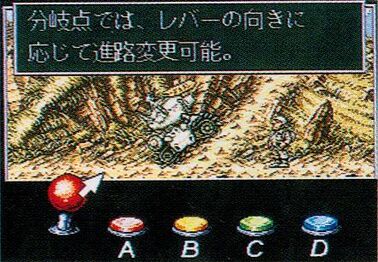
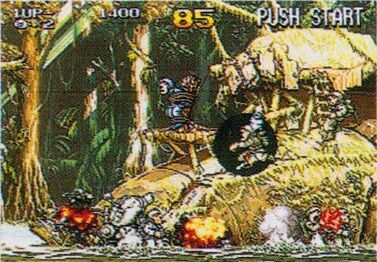
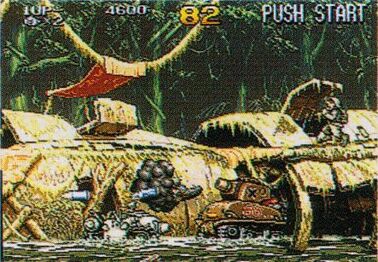
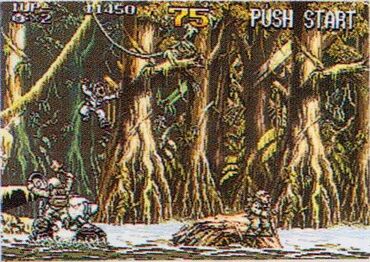
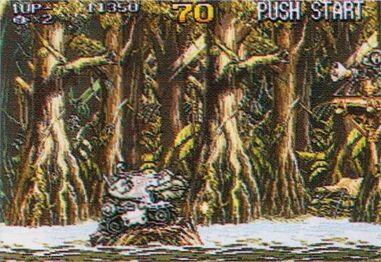
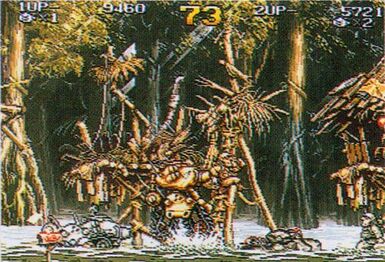
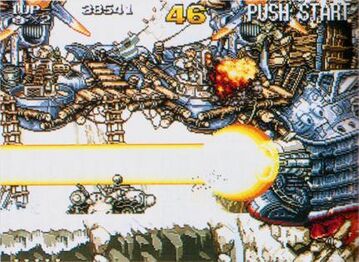
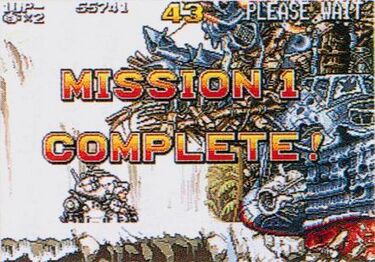
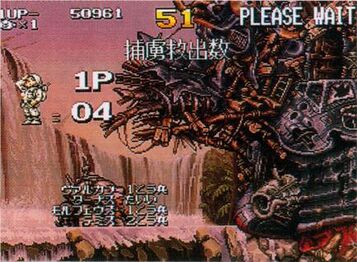
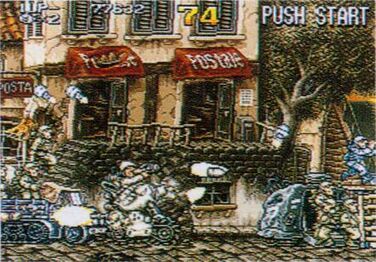
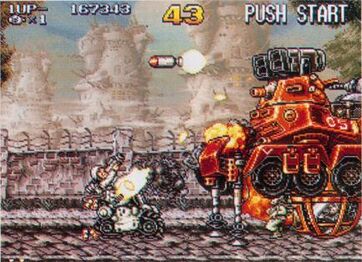
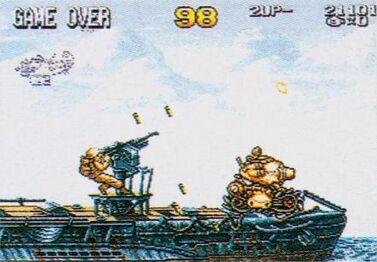
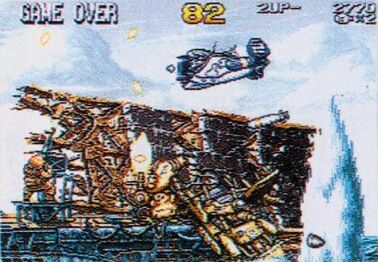
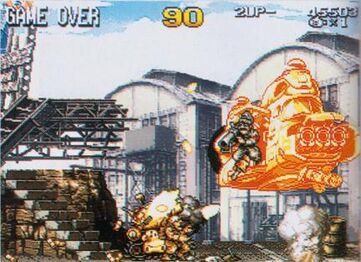
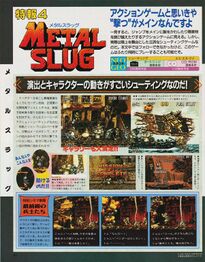
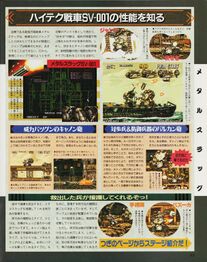
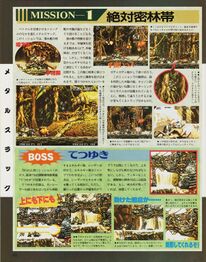

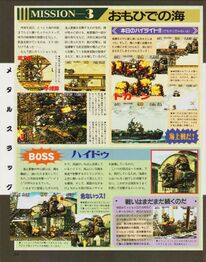
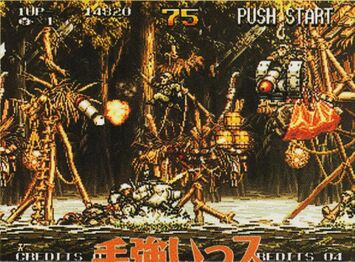
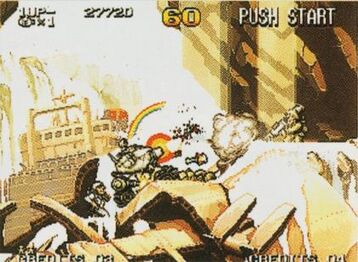
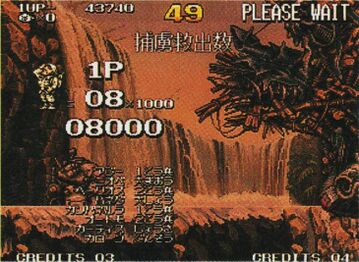
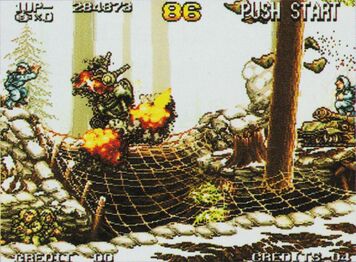
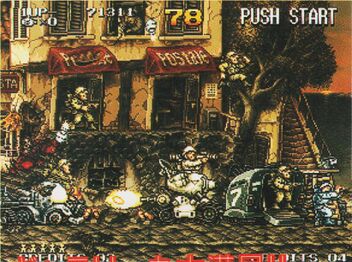
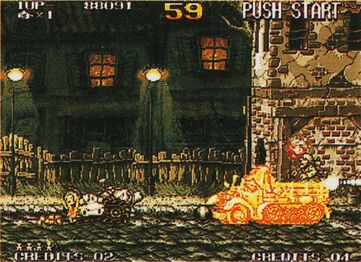

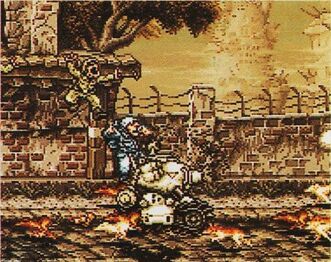
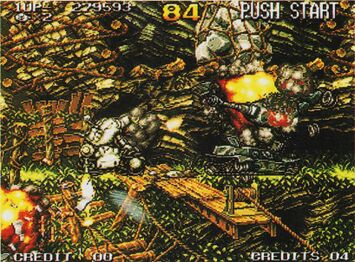
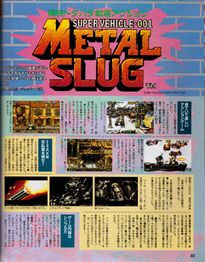
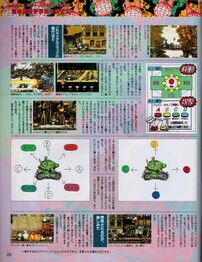
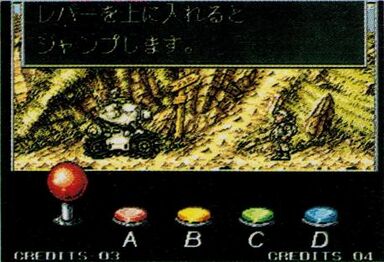
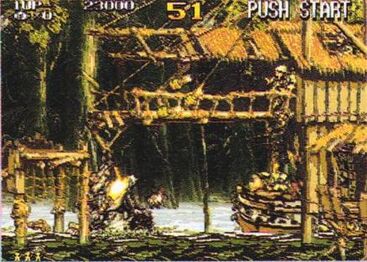
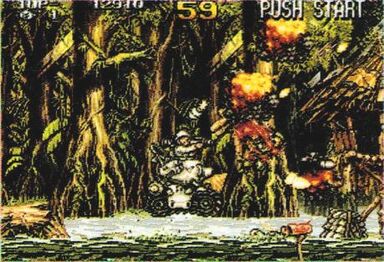
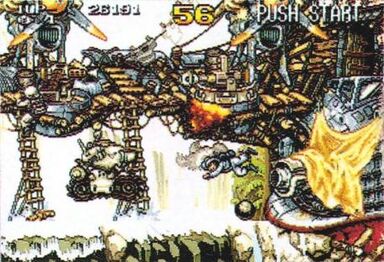
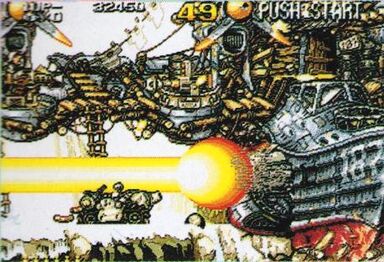
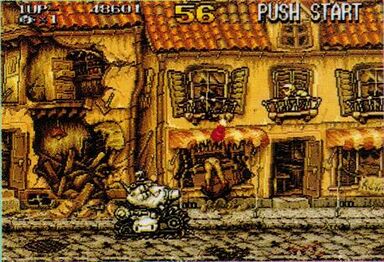
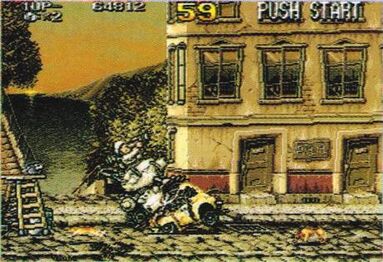
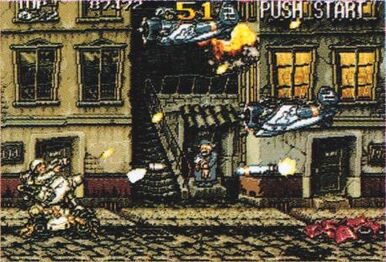

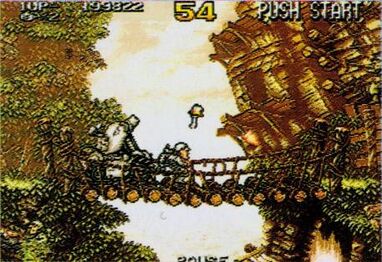
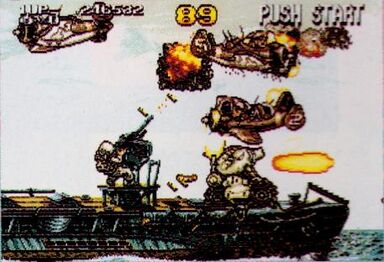
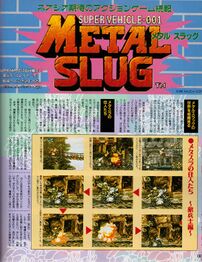
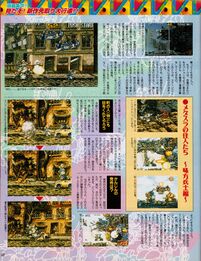

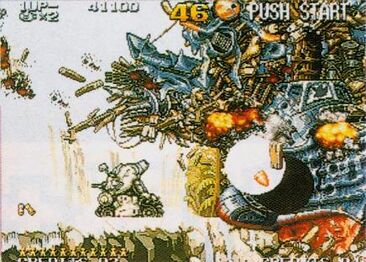
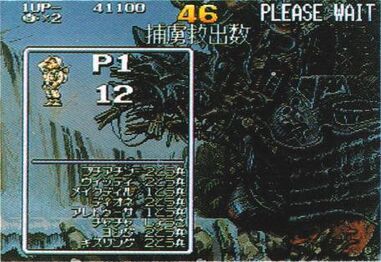
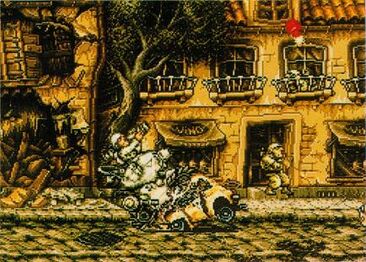
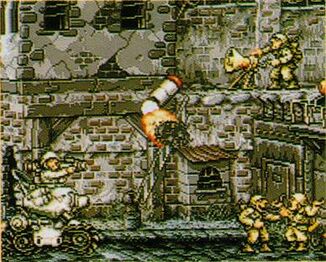
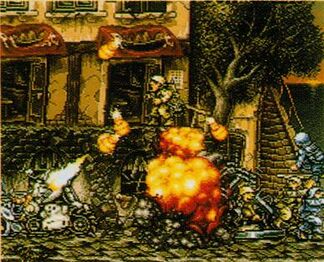
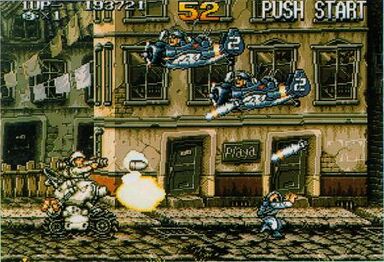
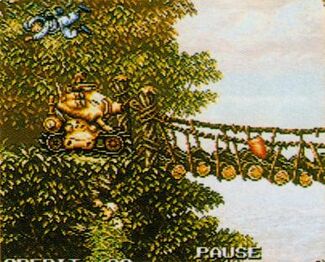
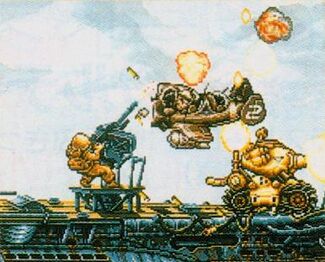
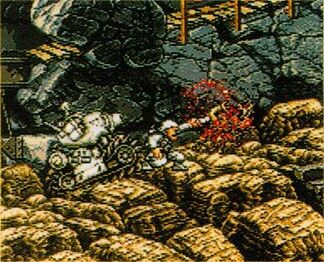
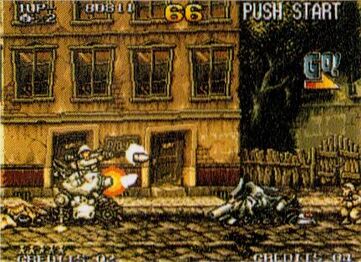

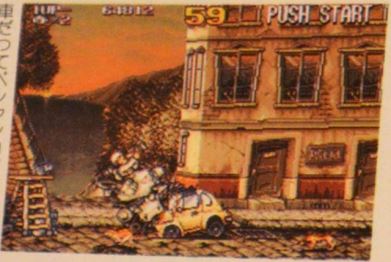
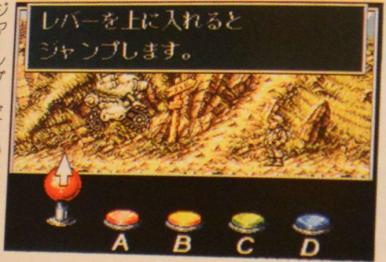
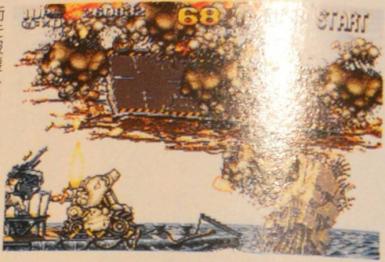
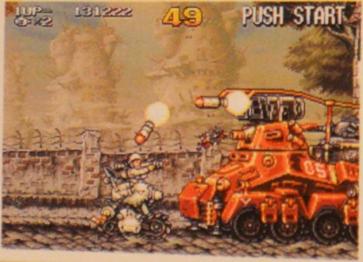
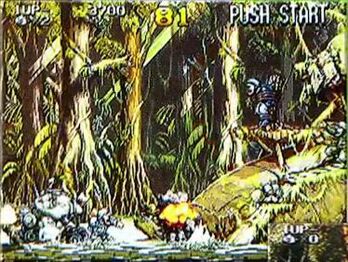
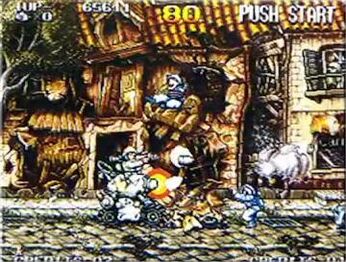
![Probably from Neo Geo Freak. The HUD has an additional 5 pip lifebar. This is present in the graphics data[4].](/w/images/2/2e/MS_NGfreak_1.jpg)
